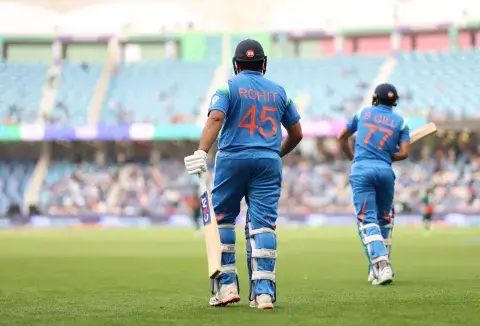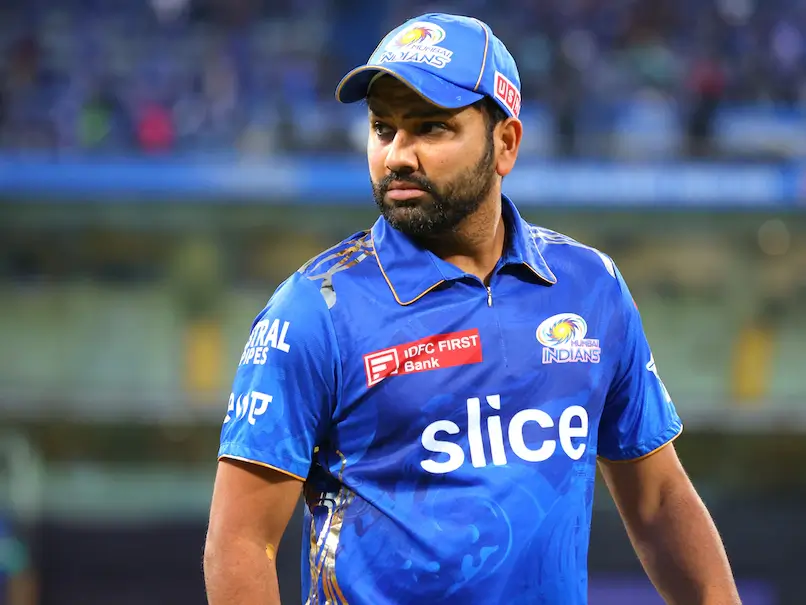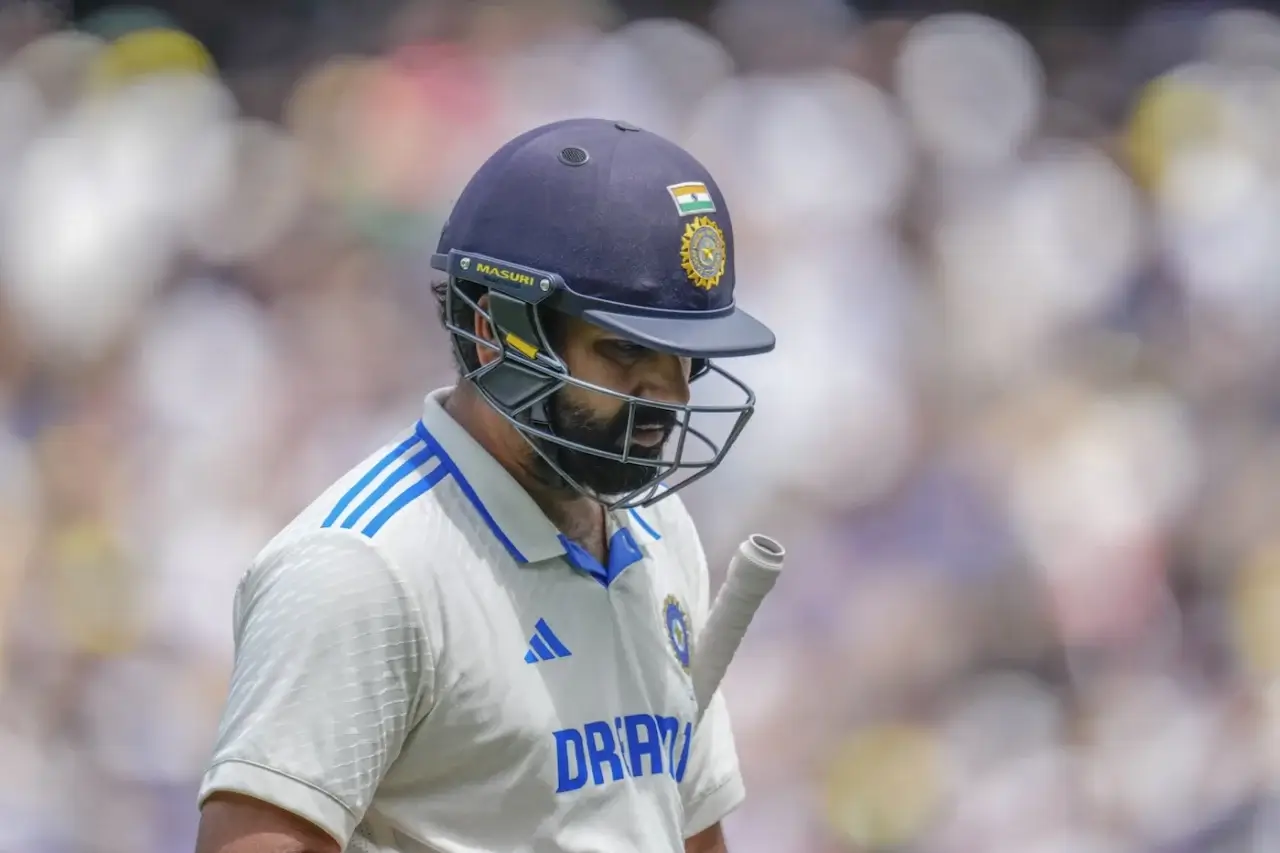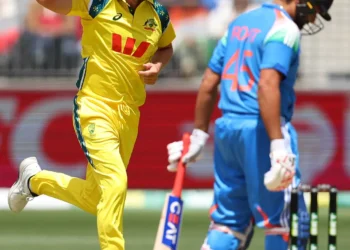Wankhede Stadium, Mumbai’s cricketing colosseum, has been a stage for historic moments since 1974. In May 2025, it honored Rohit Sharma stand, alongside tributes to Ajit Wadekar, Sharad Pawar, and Amol Kale, marking its 50th anniversary. This article explores Wankhede’s history, statistics, and Rohit’s legacy amid his recent retirements.
Wankhede Stadium, located in Mumbai, India, is an iconic cricket venue established in 1974 with a seating capacity of approximately 33,000. Known for its electric atmosphere, it has hosted historic matches, including India’s 2011 ODI World Cup victory.
Key Statistics – IPL Records
-
Highest Team Total: RCB’s 235/1 vs. MI (2015), with AB de Villiers’ unbeaten 133.
-
Most Runs: Rohit Sharma (2,439 runs).
-
Most Wickets: Lasith Malinga.
-
Best Bowling Figures: Harbhajan Singh and Wanindu Hasaranga (5/18 each).
-
MI’s Record: 55 wins in 89 matches (61.8% win percentage).
International Records
-
Most Runs: Sachin Tendulkar (1,376 runs).
-
Most Sixes: Rohit Sharma (19).
-
Highest Average: Virat Kohli.
-
Notable Matches: 2011 ODI World Cup final, Sachin Tendulkar’s retirement (2013), Virat Kohli’s 50th ODI century (2023).
Wankhede Stadium’s Legacy and Rohit Sharma’s Enduring Impact

Alongside tributes to Ajit Wadekar, Sharad Pawar, and the late Amol Kale, cementing Wankhede’s status as a shrine to cricketing legends. We explore the stadium’s rich legacy, its statistical milestones, Rohit Sharma’s recent retirements, and the broader significance of his contributions to Mumbai cricket, while envisioning the future of the sport in the city and searching for a godfather.
Wankhede Stadium: A Cricketing Colosseum
Wankhede Stadium, with its capacity of approximately 33,000, is renowned for its electrifying atmosphere, particularly during Indian Premier League (IPL) matches hosted by the Mumbai Indians (MI). Established to replace the Brabourne Stadium, Wankhede was designed to meet Mumbai’s growing cricketing demands, evolving into a symbol of the city’s passion for the sport, like England.
Statistical Highlights
- IPL Dominance:
- Highest Team Total: Royal Challengers Bengaluru’s 235/1 against MI in 2015, driven by AB de Villiers’ unbeaten 133 off 59 balls, remains the highest score at Wankhede.
- Most Runs: Rohit Sharma leads with 2,439 runs in IPL matches, showcasing his mastery at his home ground, and he showed class in his final match against New Zealand.
- Most Wickets: Lasith Malinga, MI’s iconic pacer, holds the record for the most wickets.
- Best Bowling Figures: Harbhajan Singh and Wanindu Hasaranga share the record with 5/18 each.
- MI’s Record: MI has won 55 of 89 IPL matches at Wankhede, boasting a 61.8% win percentage, the highest for any team at their home ground.
- International Feats:
- Most Runs: Sachin Tendulkar’s 1,376 runs make him the leading run-scorer in international matches at Wankhede.
- Most Sixes: Rohit Sharma’s 19 sixes reflect his aggressive batting style.
- Highest Average: Virat Kohli holds the best batting average at the venue.
- Iconic Matches: Wankhede hosted India’s 2011 World Cup victory, Tendulkar’s retirement Test in 2013, Kohli’s 50th ODI century in 2023, and semi-finals of the 1987 and 2023 World Cups, as well as the 2016 T20 World Cup.
Historical Significance
Built in 1974, Wankhede has been a cornerstone of Indian cricket, hosting domestic, international, and IPL matches. It stands honor cricketing giants: Sunil Gavaskar (East Stand), Vijay Merchant (West Stand), Dilip Vengsarkar, and Sachin Tendulkar (North Stand).
A life-size statue of Tendulkar adorns the premises, symbolizing Mumbai’s reverence for its heroes. In 2025, the stadium’s 50th anniversary prompted MCA president Ajinkya Naik to emphasize preserving its legacy: “Dedicating stands to iconic figures embeds their legacy into Wankhede’s fabric.”
Recent Developments
On May 16, 2025, Wankhede unveiled three new stands and a lounge:
- Rohit Sharma Stand: Located at Divecha Pavilion Level 3, it honors the Indian ODI captain and MI legend, a rare tribute to an active cricketer.
- Ajit Wadekar Stand: Named after the former India skipper who led India to historic Test series wins in 1971.
- Sharad Pawar Stand: Dedicated to the former MCA, BCCI, and ICC chief for his administrative contributions.
- Amol Kale MCA Office Lounge: A memorial to the late MCA president, recognizing his service.
The ceremony, attended by the honorees’ families, was a poignant moment. Maharashtra Chief Minister Devendra Fadnavis also proposed a new stadium in Mumbai, capable of seating over 100,000, to be completed by 2030 for the MCA’s centenary, aiming to rival Ahmedabad’s Narendra Modi Stadium.
Wankhede’s Architectural and Cultural Significance
Beyond its cricketing feats, Wankhede Stadium is an architectural and cultural landmark in Mumbai. Designed by Shashi Prabhu, the stadium’s circular structure and cantilevered roof provide unobstructed views, enhancing the spectator experience.
Its proximity to the Arabian Sea adds a scenic backdrop, while its location near Churchgate station makes it accessible to fans across the city. The 2011 renovation, ahead of the World Cup, modernized facilities with upgraded seating, floodlights, and drainage systems, ensuring it meets international standards.
Culturally, Wankhede is Mumbai’s heartbeat, uniting diverse communities through cricket. The stands reverberate with chants of “Sachin, Sachin” or “Rohit, Rohit,” reflecting the city’s emotional investment in its heroes. The stadium’s role is in hosting non-cricketing events, such as concerts and public gatherings. Further cements its status as a civic institution.
For young cricketers in Mumbai’s maidans, Wankhede is the ultimate dream. A stage where local talents like Rohit Sharma transform into global icons. The MCA’s efforts to name stands after legends ensure that Wankhede remains a living museum of Mumbai’s cricketing heritage, inspiring future generations.
Rohit Sharma: A Journey from Borivali to Wankhede’s Heart
Rohit Sharma’s bond with Wankhede is deeply personal. Born in Borivali, he grew up idolizing players at the stadium, often unable to afford entry to watch Ranji Trophy practice sessions. The unveiling of the Rohit Sharma Stand on May 16, 2025, was a full-circle moment.
“Wankhede has always been incredibly special to me,” Rohit said. “To have a stand named after me at this iconic venue is overwhelming. It’s a tribute to the dreams, support, and milestones that have shaped my journey.” He was a champion, and under his captaincy, he won the CT 2025 in Dubai.
Career Milestones
Rohit’s cricketing journey is a saga of talent and perseverance:
- International Career:
- Tests: 67 matches, 4,301 runs at an average of 40.57, with 12 centuries and 18 half-centuries.
- T20Is: A cornerstone of India’s 2024 T20 World Cup and 2025 Champions Trophy victories, retiring from the format on June 30, 2024.
- ODIs: Continues to captain India, with 19,700 runs across 499 international matches, including 49 centuries and 108 fifties, making him India’s fourth-highest run-scorer.
- IPL Legacy:
- Rohit’s 2,439 runs at Wankhede are part of his 6,628 IPL runs. Placing him second on the all-time list after overtaking Shikhar Dhawan with an unbeaten 76 off 45 balls against Chennai Super Kings.
- As MI captain, he led the team to five IPL titles. Thus, cementing his status as one of the tournament’s greatest leaders.
Retirement Announcements
Rohit’s recent retirements have reshaped Indian cricket:
- T20I Retirement: On June 30, 2024, after captaining India to the T20 World Cup title, Rohit retired from T20Is, leaving a legacy of explosive batting and astute leadership.
- Test Retirement: On May 7, 2025, he announced his immediate retirement from Test cricket, ahead of India’s five-match series in England starting June 20, 2025, alongside Virat Kohli’s Test exit, prompting a search for a new Test captain.
- ODI Commitment: Rohit remains active in ODIs, leading India and playing for MI in the IPL, with a match against Delhi Capitals scheduled for May 21, 2025.
Emotional Impact and Legacy
The Rohit Sharma Stand symbolizes his journey from a young dreamer to a global icon. Mumbai Indians owner Akash Ambani praised Rohit’s perseverance, while Ajinkya Naik noted that the stand inspires aspiring cricketers. Posts on X reflect the emotional weight of his retirements, with fans and analysts like Harsha Bhogle offering heartfelt tributes. Rohit’s Test exit was unexpected, but his ODI leadership ensures his influence endures.
Rohit Sharma’s Leadership and Tactical Brilliance
Rohit Sharma’s impact transcends his batting prowess, as his leadership has redefined Indian cricket and the IPL. As India’s captain, he ended an 11-year ICC trophy drought with the 2024 T20 World Cup. It led the team to the 2025 Champions Trophy, showcasing my ability to inspire under pressure, as India was beaten by Zimbabwe in 2024.
His tactical acumen includes strategic bowling changes and innovative field placements. It was evident in India’s dominance in the 2023-24 Border-Gavaskar Trophy, where he outmaneuvered Australia’s strategies.
In the IPL, Rohit’s captaincy transformed Mumbai Indians into a powerhouse, securing five titles between 2013 and 2020. His calm demeanor, trust in young talents like Hardik Pandya and Jasprit Bumrah, and ability to manage high-pressure chases earned him respect.
At Wankhede, his leadership galvanized the crowd, turning the stadium into a fortress for MI. Even after stepping down as MI captain, his mentorship continues to shape the team. As seen in his guidance during the 2025 IPL season. The Rohit Sharma Stand honors not just his runs but his vision as a leader who elevated Mumbai cricket to global prominence.
The Future of Mumbai Cricket
The unveiling of the Rohit Sharma Stand coincides with a transformative moment for Mumbai cricket. The MCA’s commitment to preserving Wankhede’s heritage is complemented by Chief Minister Devendra Fadnavis’ proposal for a new 100,000-capacity stadium by 2030.
This ambitious project aims to accommodate Mumbai’s growing fan base and host marquee events. Thus, potentially including the 2031 Cricket World Cup. The new stadium, if realized, could feature advanced facilities. Like retractable roofs and eco-friendly designs, it sets a new standard for cricket venues.
Conclusion
Wankhede Stadium’s 50 years and the Rohit Sharma Stand symbolize Mumbai’s cricketing soul. From its architectural grandeur to its cultural resonance, Wankhede is more than a venue—it’s a legacy.
Rohit’s journey, from Borivali’s streets to Wankhede’s heart, reflects the city’s spirit of resilience. As a new stadium looms, his stand and leadership ensure that Mumbai cricket’s story, written in sweat and cheers, endures for generations.
Meanwhile, Wankhede remains the cradle of Mumbai’s cricketing dreams. The MCA’s grassroots initiatives, such as academies and talent scouts. It continues to nurture players like Rohit, who emerged from Mumbai’s maidans. Rohit’s legacy, embodied in his stand, will inspire young cricketers to chase their dreams.
While his active role in ODIs and the IPL ensures his influence persists. As Mumbai cricket looks to the future, balancing tradition with innovation, Wankhede’s soul—its history, heroes, and passionate fans—will continue to shape the sport’s narrative.

















